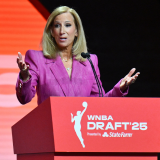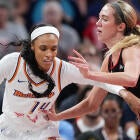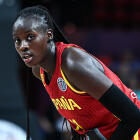WNBA CBA showdown: The case for optimism in the most important labor negotiations in women's sports history
With a 30-day extension in place, transformational change feels closer than ever
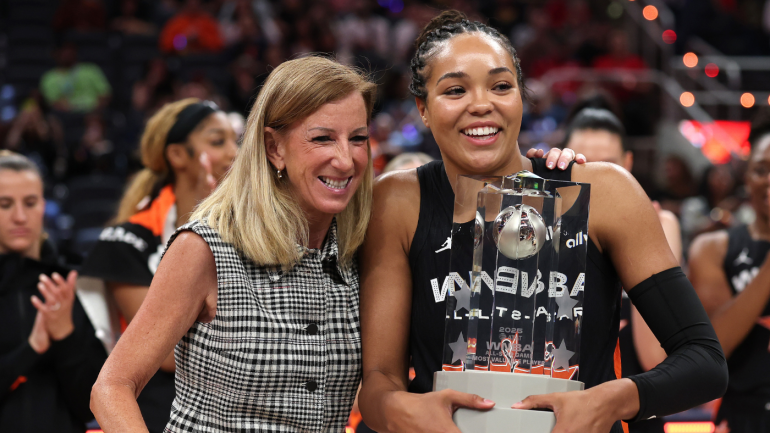
Last Thursday, one day before the Oct. 31 deadline, the WNBA and WNBA Players Association (WNBPA) announced they had agreed to a 30-day extension for the current CBA, giving the two groups at least 30 more days to negotiate a new deal.
This takes a potential lockout off the table for now -- though according to The Athletic, both sides have the ability to terminate the extension with 48 hours notice -- and shows that the two sides can at least agree on something. It also shows that there is reason to be optimistic that the transformational deal the players are seeking is within reach.
If you've been following the labor fight over the last few months, you might not share my optimism. Things have gotten ugly. The players initially opted out of this current CBA one year ago, but they turned up the heat on negotiations this summer when 40 players attended a bargaining session before the WNBA All-Star Game in Indianapolis, and felt "disrespected" by meeting. Ahead of the All Star game, players wore t-shirts that read, "Pay Us What You Owe Us."
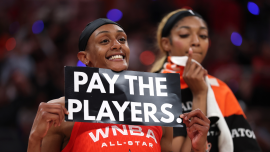
During the playoffs, WNBPA vice president and Minnesota Lynx star Napheesa Collier escalated tensions when she delivered a pre-written statement at her exit interview declaring that the WNBA had the "worst leadership in the world." A couple of weeks ago, NBA commissioner Adam Silver (who oversees WNBA commissioner Cathy Engelbert) said in an interview with the Today Show that while WNBA players deserve a big raise, "share" of revenue was the wrong framework for the conversation; instead, he said the salary numbers should be fixed.
The WNBPA took umbrage with that characterization, and WNBPA executive director Terri Jackson issued a statement saying that "the league's response has been to run out the clock, put lipstick on a pig and retread a system that isn't tied to any part of the business and intentionally undervalues the players."
The crux of the dispute is over revenue sharing. The WNBA does want to give the players a significant raise -- Front Office Sports reports that the WNBA has proposed a deal with a max salary of about $850,000, up from $250,000, and a minimum salary of $300,000, up from about $80,000. But the league wants to keep the current framework in place -- a fixed salary cap that increases by a pre-determined percentage each year. In this model, revenue sharing is only triggered if certain financial targets are met.
The players want a model more similar to the one in the NBA, where salary caps are directly tied to a percentage of basketball-related income. This would allow them to reap the benefits of the WNBA's growth in real time. In the NBA, players receive about 50% of basketball-related income; it's unlikely that WNBA players would be able to achieve a 50% split because operating costs are high and there isn't as much revenue to cover them as there is in the NBA. But right now WNBA salaries only account for approximately 9% of basketball-related income.
These are two fundamentally different ways at looking at compensation and growth, and it's undoubtedly worrisome that the two sides are still approaching negotiations in such disparate ways this late into the process.
But my optimism remains, because for perhaps the first time in women's team sport history, there is enough money in the pool to make all parties happy, and enough momentum to provide motivation to make uncomfortable moves in the short term to set the stage for more riches for everyone in the long run.
WNBA revenue hasn't just increased in the past few years; it has exploded. The league just signed an 11-year, $2.2 billion television deal, with supplemental broadcast deals still to come. Mark Davis bought the Las Vegas Aces for $2 million in 2021. Four years and three championships later, the Aces are valued upward of $300 million. Owners of the three most recently announced expansion teams -- Cleveland (2028), Detroit (2029) and Philadelphia (2030) -- ponied up $250 million expansion fees each. Sportico reports that the Golden State Valkyries, who just completed their inaugural season, are already worth $500 million and should make about $70 million in revenue this year. The 2025 season smashed attendance records and saw ratings soar. The business is healthy and shows no sign of slowing down.
Women's sports have, historically, been treated with kid gloves by investors and owners, with operating structures created to minimize losses and prioritize stability above all else. Since women's team sports are so new in the professional marketplace compared to their men's counterparts, and face layers upon layers of systemic sexism in media, advertising, fandom and business, the conservative approach was somewhat understandable.
But when you let the worst-case scenario dictate every decision, you put a cap on the best-case scenario. It's a testament to the players that the league has grown as much as it has despite this limiting governance. With this next CBA, players are asking the league to take the training wheels off. It's going to take a mindset shift from owners and, most likely, some compromises from the players to help grease the wheels. But there is too much money to be made by all parties for good sense not to prevail.
The WNBA is no longer in survival mode, and it's time for a CBA that reflects that. Hopefully by Nov. 30 that will be a reality.


